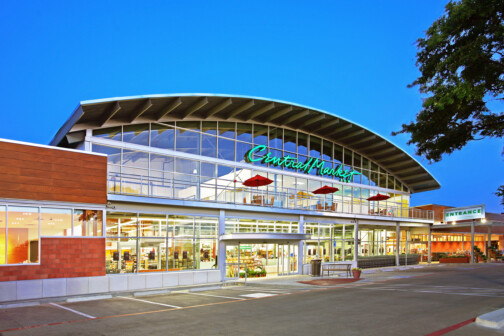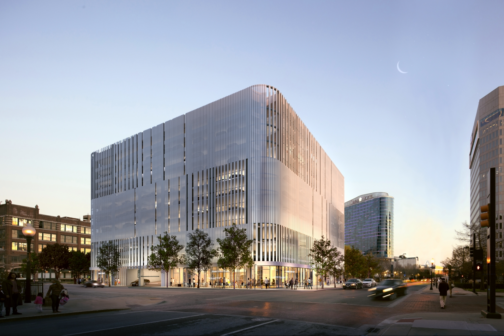Supply chain stories continue to make headlines as manufacturers and retailers struggle to keep shelves filled, and consumers feel the pain of product shipping delays and price surges. This global traffic jam began when the logistics pipeline that delivers $1 trillion worth of electronics, games, toys and furniture each year was abruptly disrupted, leading to downstream effects for industries that provide critical components and raw materials. Not only are freight costs up, but the entire supply chain is backed-up, and it’s taking twice as long to receive goods as it did prior to the pandemic.
The bottom line is that the COVID-19 pandemic was the catalyst of supply chain problems and transitions that were already underway and were only exasperated. It’s impossible to point to just one reason for this back-up. It’s the confluence of multiple issues that has led us to rethink the true impact of supply chain and the domino effect that will have lasting effects across industries for years to come. Now, experts estimate things won’t be back to status quo until 2023.
This has particular implications for commercial real estate, from building material shortages in the development and tenant improvement phases of projects, to operators rethinking their strategies around offshoring production and leaning into just-in-time inventory strategies.

The Storage Shortage and What it Means for Real Estate
Most people are aware of the congestion happening at the ports due to delays and the increase in product demand. To combat this traffic, major ports recently increased their hours to function 24/7. However, this creates pressure on other weak links in the supply chain – where will the increased amounts of product coming in go? Not only is there a labor shortage of employees to work these ports, but there’s also a shortage of truck drivers to move goods from the ports to their storage destinations. Operators must then reconcile the tight labor market at the local level, with the lack of warehouse inventory and growing rental rates.
Adding even more pressure, companies don’t want to be stuck without product like many were with the pandemic first hit and have since tried to find additional space to store product. Now, as warehouses on the market have been absorbed, there isn’t enough time to build additional warehouses and distribution centers to keep up with the influx of products coming in. It’s already challenging to find the available land to build on, but with the supply chain disruption causing delays to raw materials, it can now also take anywhere from 12 to 18 months for buildings to be completed. Small items like dock equipment have delays of nearly six months, and essential components such as steel are taking over 12 months. Additionally, it can take up to 30 weeks for dock levelers to pull-up, and roofing material currently has a four-to-six-month lead time.
According to JLL’s 2021 Industrial Tenant Demand Study, e-commerce tenants account for 52% of tenant demand in urban logistics markets. This includes Dallas-Fort Worth, where the need storage space to house inventory has increased greatly and added additional strain on current retail systems.
What This Means for DFW
The good news is that Texas will be a beneficiary of this supply chain chaos. Dallas-Fort Worth has a historically low vacancy under six percent, and it’s continuing to decrease, while other primary coastal markets are hovering at almost three percent according to JLL’s Q4 United States Industrial Outlook. Companies located on the coast are feeling pressure and are choosing to relocate to DFW. A few of the many reasons include lower cost of living, access to a diverse and qualified talent pool, and the Texas pro-business political climate. These moves have resulted in over 40 million square feet of industrial development in DFW at the end of 2021.
As things continue to evolve, there will also be a transition in the types of businesses in the area. The electric vehicle industry is booming, bringing a new level of sophistication and higher living wage to the area. This impact is already visible in other markets, with Tesla building their new Giga-factory outside of Austin, and Rivian, a California-based company that recently went public, becoming the second most valuable U.S. auto manufacturer. It’s likely similar companies expand into the DFW area as businesses continue to look to North Texas for new opportunities.
What the Future Holds
There will continue to be shortages across the board, from manufacturing to distribution, for at least the next two years. As supply chain issues unfold, smaller niche retailers will face more challenges in keeping their shelves stocked, as opposed to the large leading retailers who have access to different markets and products across the nation.
Consumers, on the other hand, will continue to demand faster delivery times than ever before. Customers expect coinvent and quick options, including same-day, next day and two-day delivery. This ultimately will drive companies to either increase their sitting inventory and real estate footprints, or revolutionize their supply chains through thinking outside the box (all pun intended) investments in people and in new technologies.
As for Dallas, the increased and diverse construction to support ongoing real estate demand will continue. Dallas-Fort Worth’s strong infrastructure, geographical position and pro-business climate will continue to drive our economy in the short term. In the long-term, the diverse labor force, strong university systems and diverse economy will continue to make us a national powerhouse.
Fred Ragsdale is a senior associate in JLL’s Dallas office.






